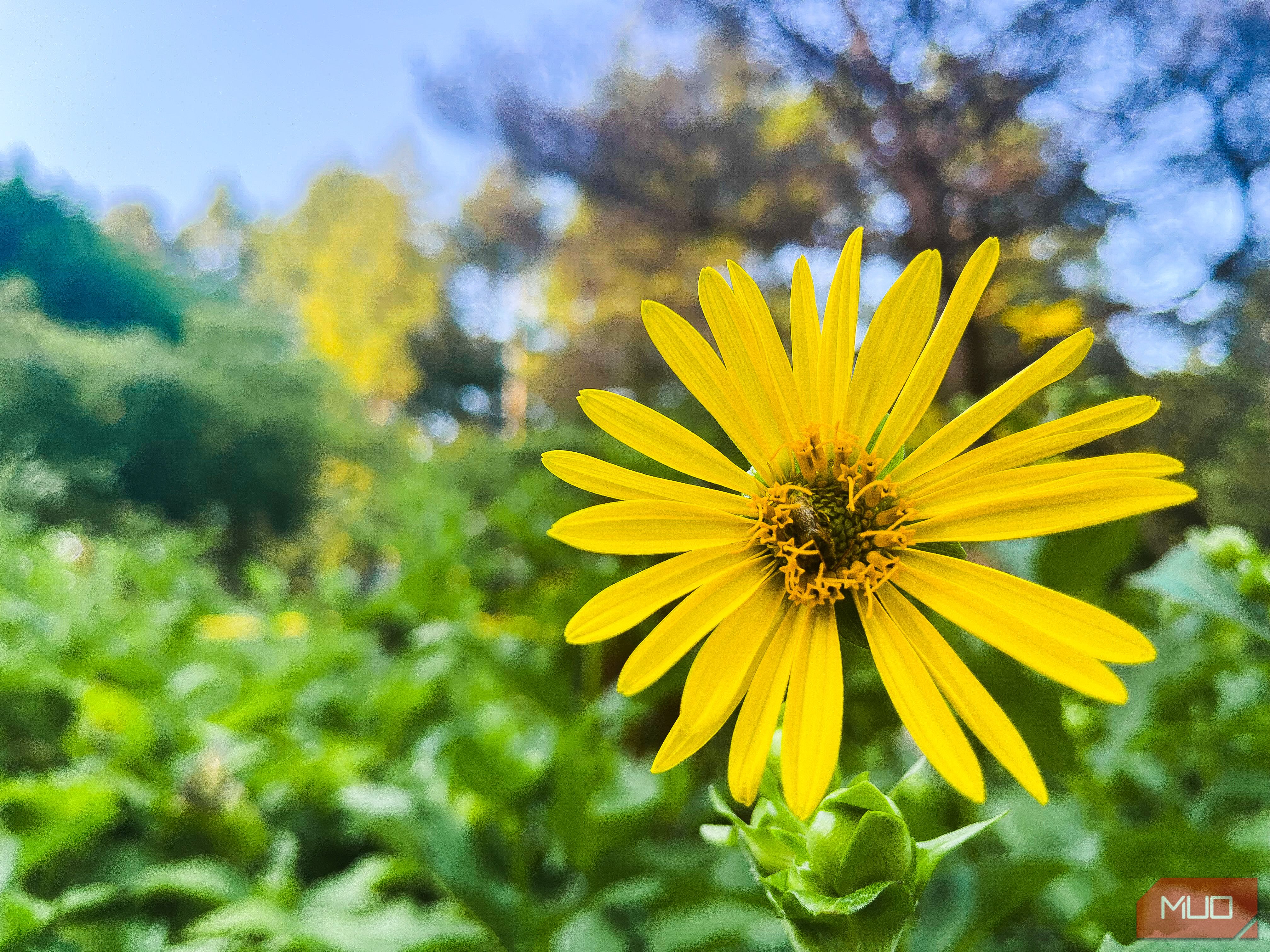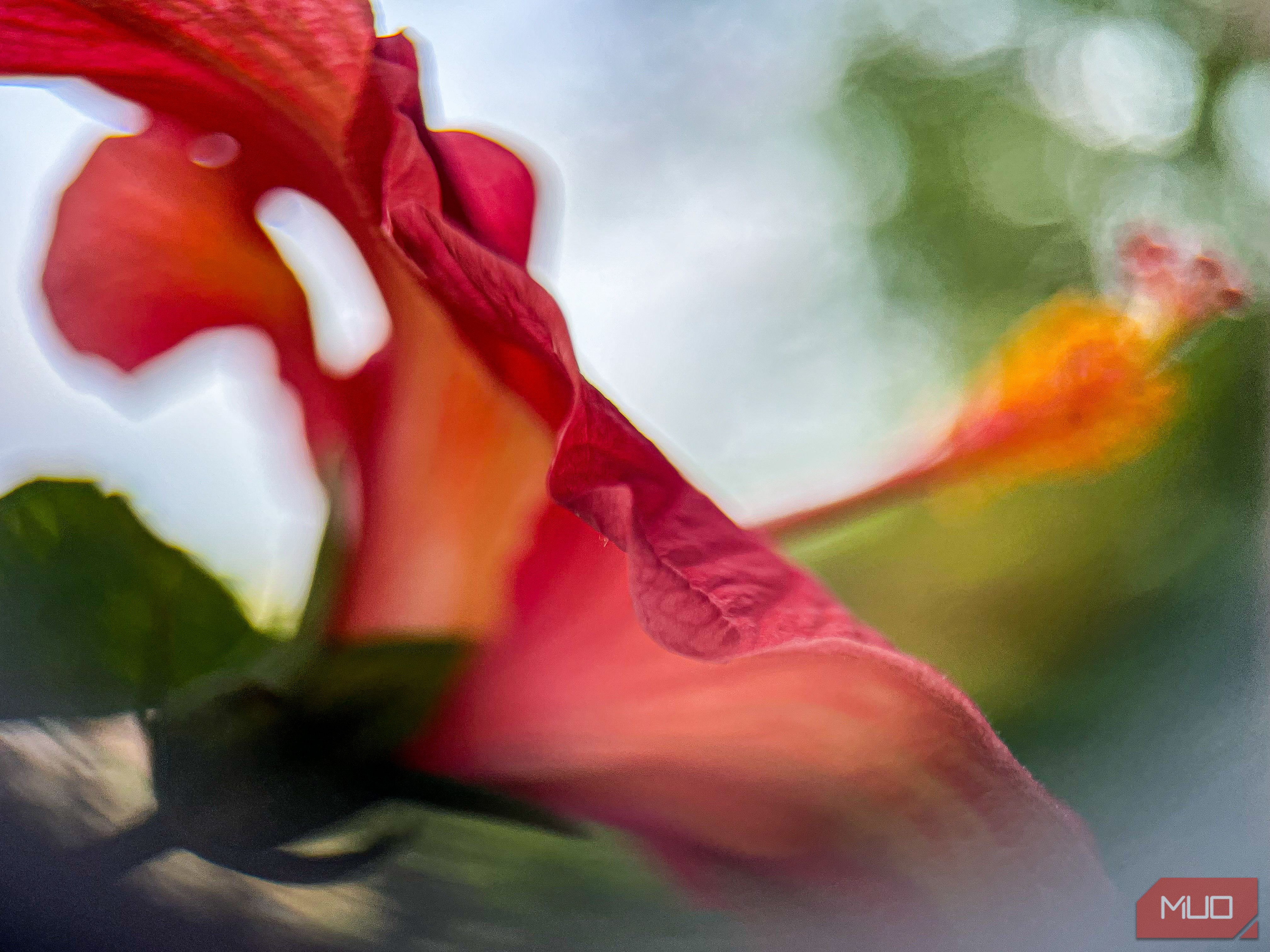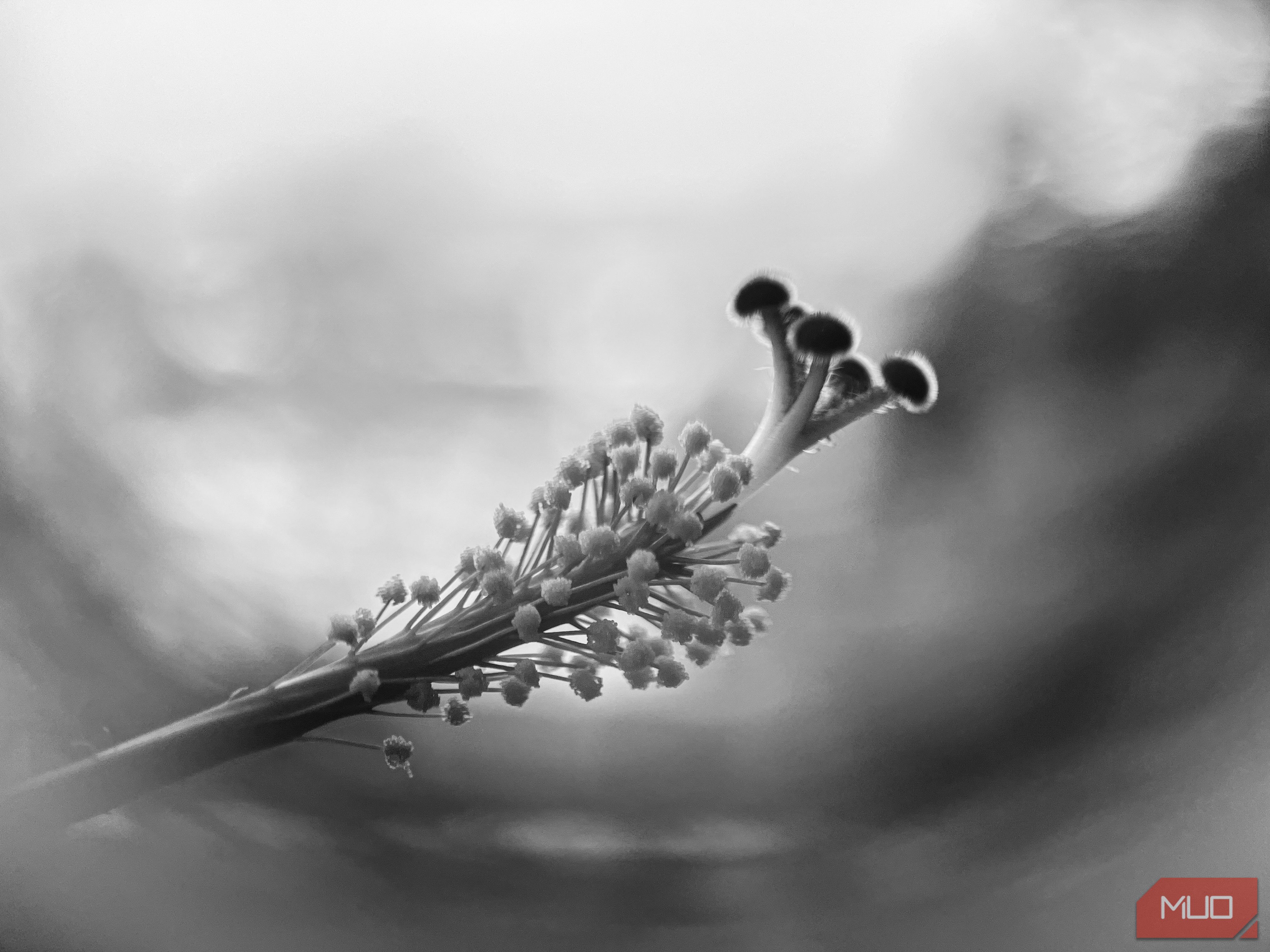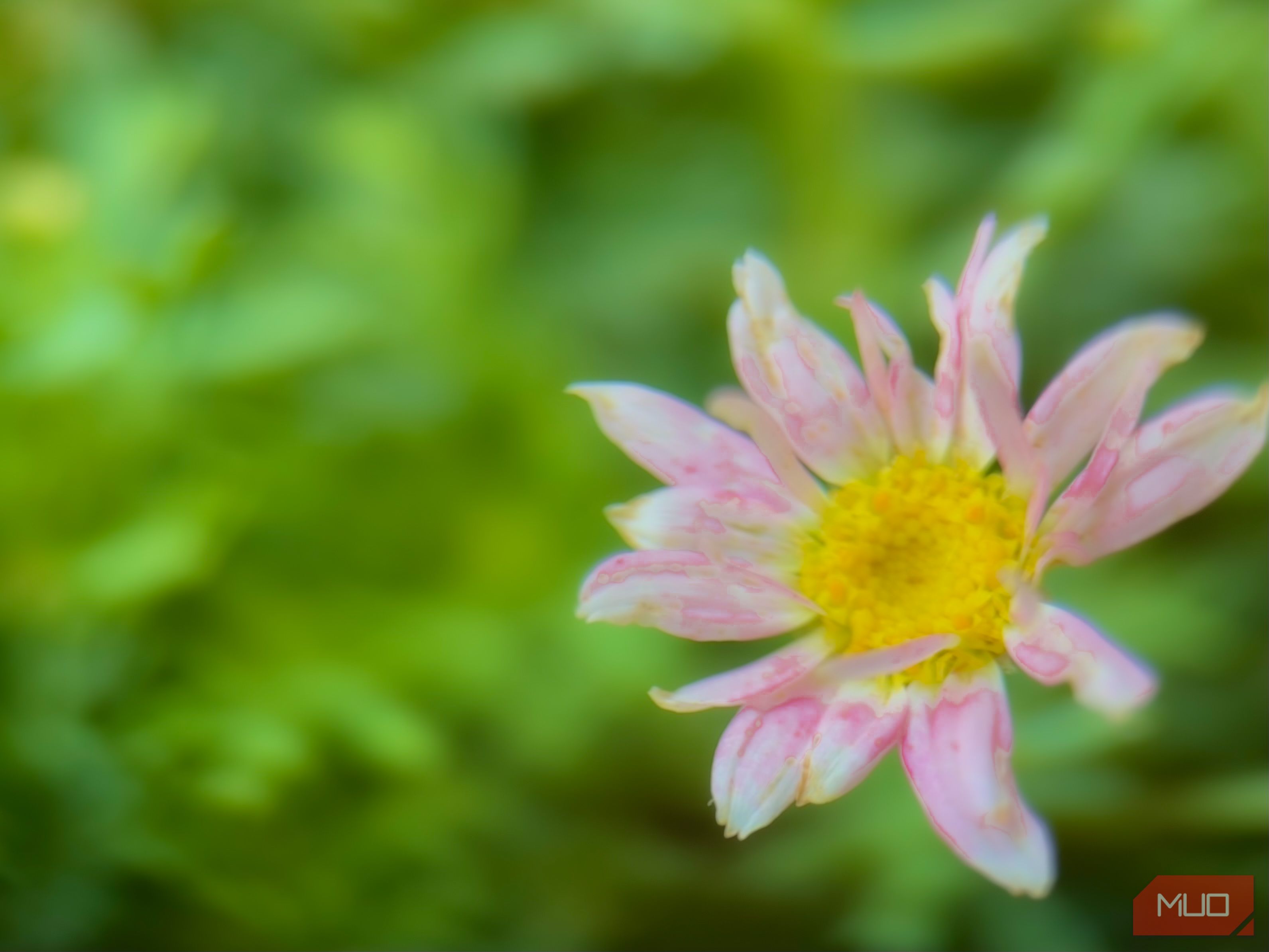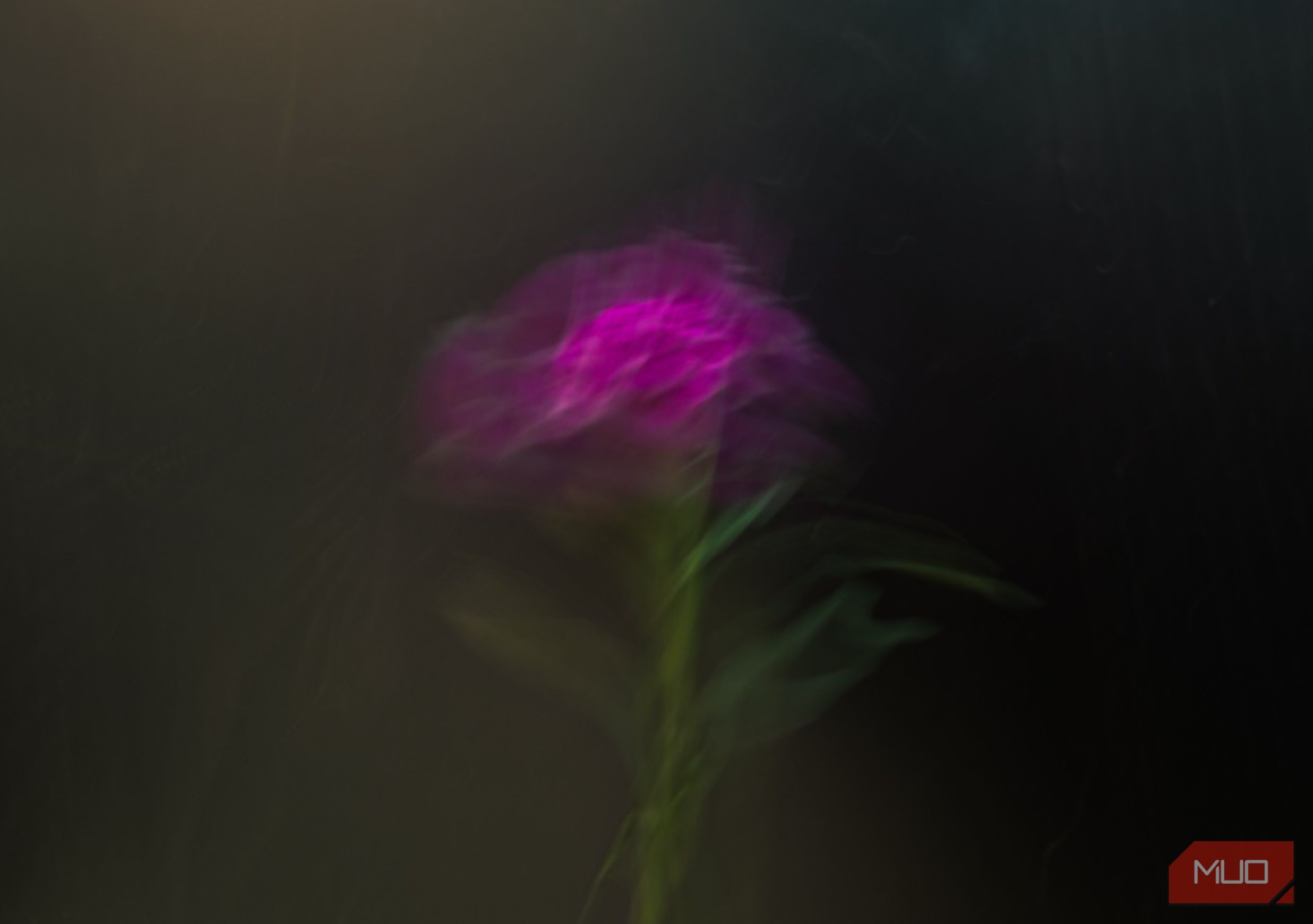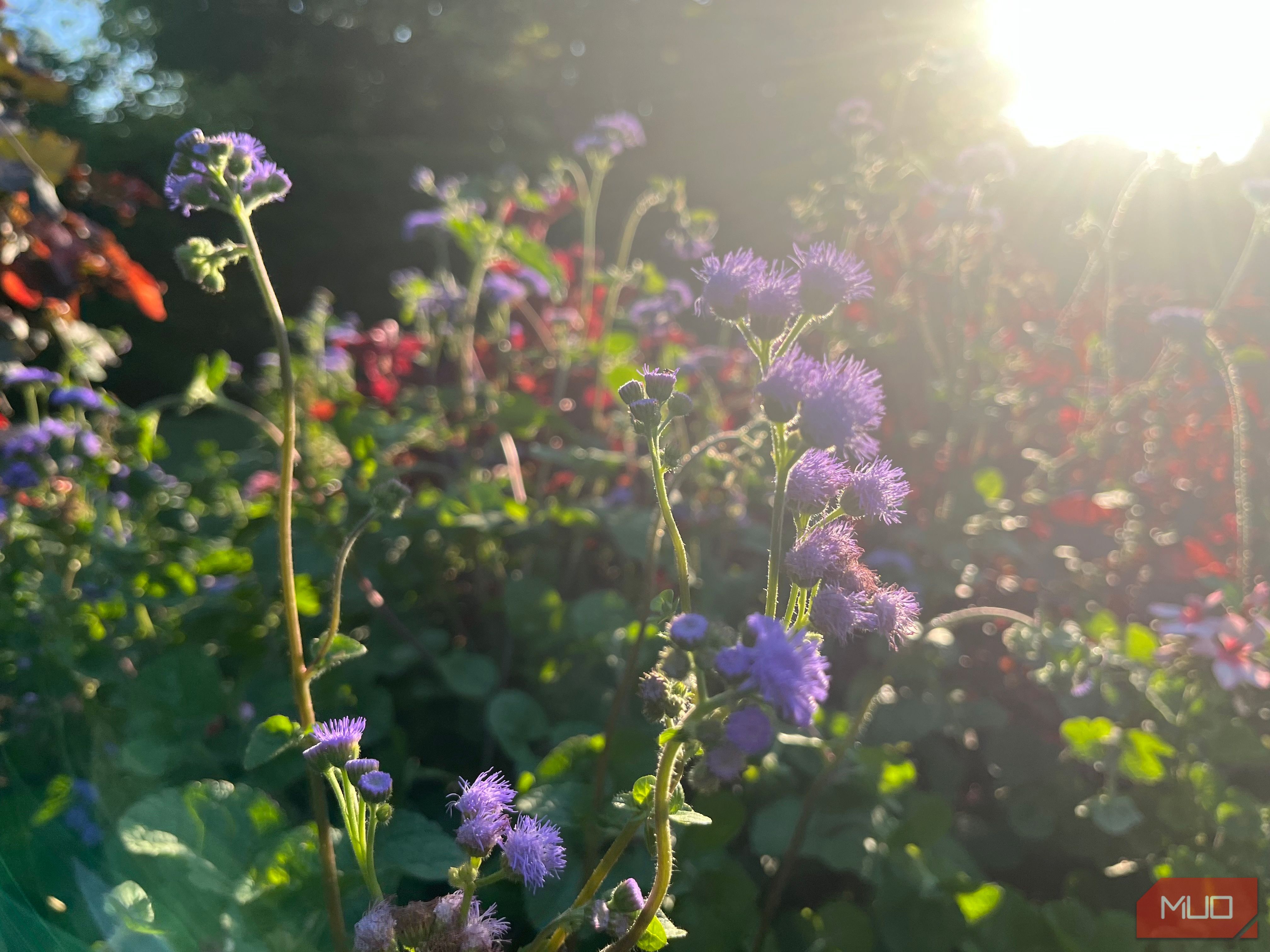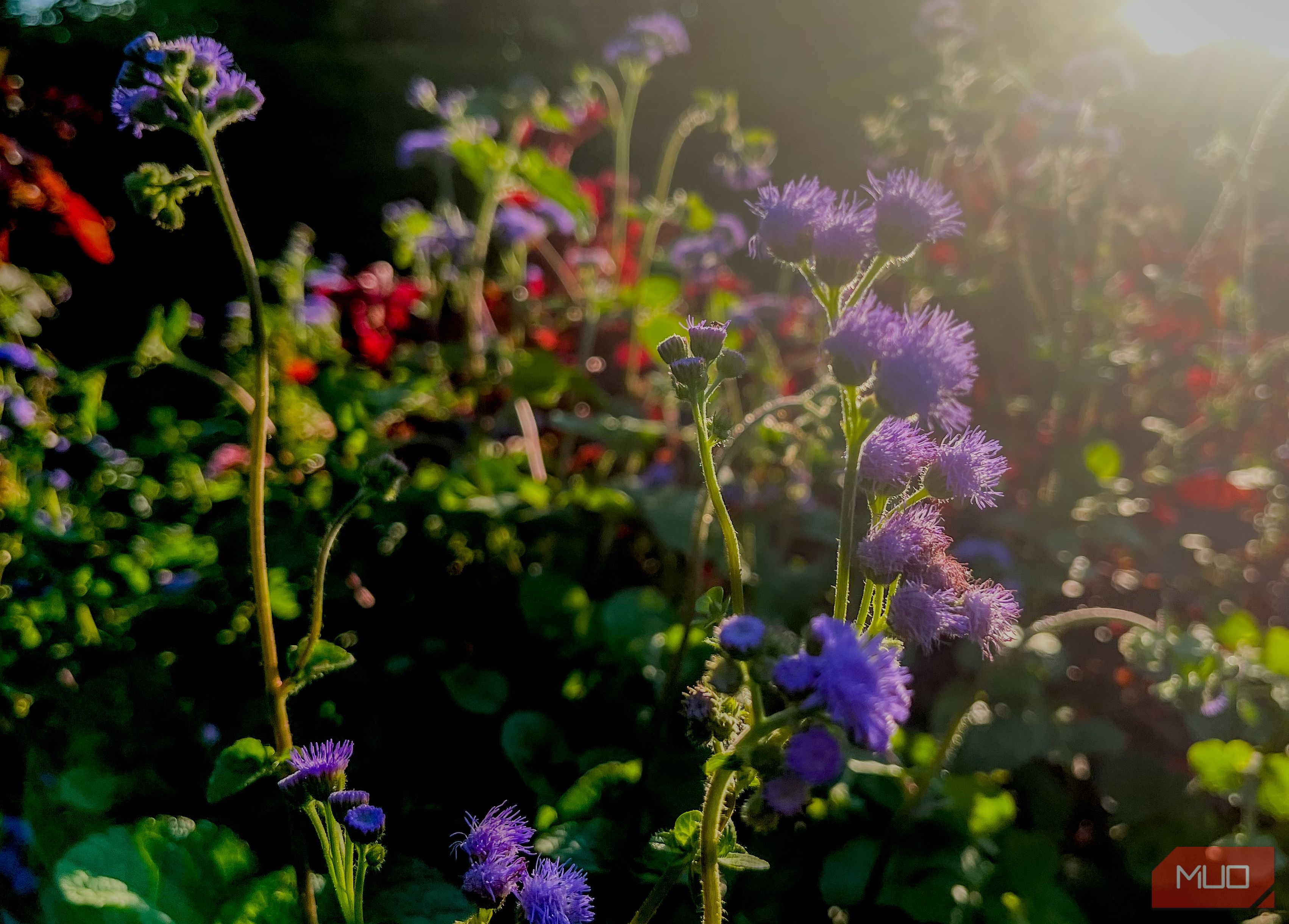Flowers are the easiest subjects to photograph. At the same time, it’s also challenging to capture a unique flower photo that stands out. But not anymore. Taking stunning flower photos with your phone is easy with just a few simple tricks.
6
Use a Shallow Depth of Field
You may have heard the benefits of doing this many times already. Depth of field is the technical term for how much of your scene is in focus. A shallow depth of field is when the background is blurred, leaving only the subject in focus. This is an effective way to bring attention to your subject.
Almost all the latest smartphones have the capability to adjust the aperture or f-number, which allows you to control the depth of field. If you don’t see this option on your phone, you can use apps that will let you shoot in manual mode.
Use a spray bottle to spray water droplets on the flower. This can make the flower look fresh and add interest.
It also helps if you remove distractions from the background. You can try to achieve this by using cut flowers or adjusting your angle when shooting in your garden. When framing, take a moment to look at the background and find the best composition possible.
5
Check Out New Perspectives
A straight-on flower shot—although beautiful—lacks the punch. So, look up, crouch down, or try any angle other than the boring one you always use. Remember, taking risks and trying new things are the hallmarks of artistic photography.
When you try different angles, you will also notice the subtle shift in light and the beautiful bokeh in the background. Again, pay attention to these small details—they are crucial to elevating your image and making it pop. Also, there is a significant amount of brown in the garden, which can be unflattering in the photos. Feel free to bring your flowers indoors and try photographing them against different backgrounds.
4
Play With Composition
We have discussed the importance of using compositional rules many times before, for good reason. Even if you have the latest phone with all the bells and whistles, your image can look amateurish if you don’t use proper compositional rules. Start with symmetry, which is easy to achieve in flower photos. Follow the rule of thirds to make your photos more dynamic.
Use the macro mode on your smartphone’s camera to highlight the texture of the flowers. You can also add an external macro lens.
Additionally, look for ways to incorporate the elements of design, such as line, color, shape, and texture. These will quickly elevate your image to an artistic one. Look for the natural curves in the petals and stem to accentuate the line or shape. There is always texture in the flowers—zoom in to highlight that.
Most of us are not fans of using artificial elements like fences and pots in our flower photos, but they can add interesting elements to your scene if incorporated thoughtfully.
3
Experiment With Slow Shutter Speed
Slow shutter speed or long exposure photography can be artistic and fun in landscape photography. In the same way, you can use a slow shutter speed to take surreal flower photos. We recommend using third-party apps, but you can also use your phone’s camera for this purpose.
The easiest and quickest way to achieve the dreamy look in your image is to take a live photo and convert it into a long exposure one using the built-in editing feature on your iPhone. This process will give you an excellent image, but it may be limiting because live photos are only 3 seconds long.
For more control, try using apps that will allow you to adjust the shutter speed. My favorite is Slow Shutter Cam. You can precisely adjust the blur level, and the app will let you choose a shutter speed for as long as you need.
Even though we use a tripod for long exposure photos, you can skip it for flower photos. It’s more fun to move your phone intentionally and introduce blur. This type of photography, known as ICM or Intentional Camera Movement photography, can produce impressive results.
2
Try Multiple Exposure Photography
Multiple exposure is another technique that can add depth and impact to your photos. You can achieve this effect by superimposing one image over another. This can be done either on your phone or while editing your pictures during post-production.
You can do this on an iPhone very easily. First, ensure that Live Photo is enabled on your phone’s camera, and then choose the 0.5x lens. Then, quickly toggle to 1x while taking the picture. The resulting image will be a beautiful blend of the wide and zoomed-in shots, creating an ethereal and artistic look.
If you prefer to do this manually, you can take two or more flower images and layer them on top of each other at varying opacities. This method will give you more control over the number of photos you want to use, but you need special apps to create the effect. You can use Photoshop Express or Photoleap for heavy-duty editing like this.
To take this further, try using the ICM technique to take photos and then create the multiple exposure effect in the app of your choice. Try different flowers and create something new.
1
Edit Your Photos
Whether you’re doing complex editing, such as multiple exposure photography, or not, editing your flower photos is always a good idea. Editing can bring out the details in your photo, making it look clean and professional. For example, if you’ve missed using a low f-number or shallow depth of field while taking your flower photo, you can still make your subject stand out by blurring the background in editing apps.
I recommend using Lightroom, as it provides nearly all the necessary controls for editing images. Start with brightness, highlights, and shadows. Then, tweak the vibrance and saturation. Adjust the temperature and tint to make your image cooler or warmer. The texture and clarity sliders can add details or make the image fuzzier. The selective adjustments, which can be made using the masking option, are excellent for making adjustments only in specific areas of your flower photo.
For instance, the above photo looked way too cluttered straight out of the camera. It had powerful sunlight shining at the top right. I adjusted the blacks and shadows, and experimented with texture and clarity to achieve the final image, which has an impressionist look.
If you have a single flower as your subject, you can also make the background black to increase the visual impact.
When you’re taking a flower photo, don’t just document it. Aim to add your own creative spin to make it more artistic and captivating. Whether you’re shooting in a garden or a studio setup, try something new and unexpected.
It also helps to explore other forms of art, like painting, to get inspired. You can visit galleries or create mood boards to train your eye. Flowers will always be a classic, and there is no right or wrong way to photograph them. So, go ahead and have fun!
